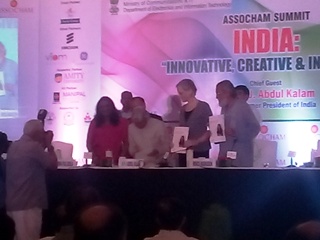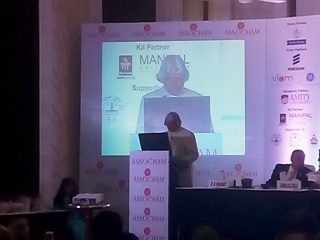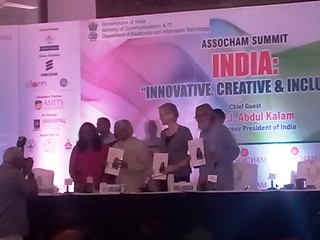ASSOCHAM Summit on “India: Innovative, Creative & Inclusive”
On 21st May, I attended this ASSOCHAM event on behalf of Skyline. The purpose of this event being convened was to discuss matters on how India can grow while constantly innovating and being inclusive in approach. Dr. A.P.J. Abdul Kalam was the chief guest and star attraction of the summit.
One thing about which I feel quite strongly about in this regard is to do with patents and Intellectual Property Rights. How these have been swept under the carpet for so long is baffling. Similar is the case of Geographic Indicators (GIs). We need to strongly implement the rules and norms regarding the same.

With regards to IPR though there are several grey areas. A couple of decades back a European multinational pharmaceutical giant developed a fungicide based on the neem (Azadirachta indica) tree which grows abundantly in India. They even got themselves a patent which issued which meant shockingly that Indians could also not use the neem tree’s products for usage unless buying from the particular MNC which had patented this. Of course, this case provoked massive fury as neem is an integral part of Indian culture and traditional medicinal practices. The case dragged on for long before finally the patent was revoked. Post this case there was the trend of group IPRs, where an entire group would be given patent rights for helping discover a certain medicinal herb. Thus another European MNC worked closely with the Kani tribe in Kerala state and when a particular drug was developed, the entire tribe in the area was given the patent. This seemed very good on paper as apparently local people had been credited for uncovering age old secrets and this would lead to development at grassroots level. However, this case too took an unexpected turn. Tribals in other states of India who had been using the same herb and knew its medicinal properties demanded that they too must be compensated. And various other such claims came by. Thus even with the best of intentions, IPRs especially on the biological side pose major grey areas which need to be solved by stakeholders and policy makers together.

The case of GIs is even more complicated. The best comparison would be with the concept of terroir in France to do with wines. In France it is believed that a particular grape can only grow best at a particular terroir which includes the soil, the climatic conditions and even the micro-organisms present in the soil. This gives the grape a unique taste. Thus the Cabernet Sauvignon dark grape variety is intrinsically connected to the Bordeaux region while the Chardonnay white grape variety is linked to the Burgundy region. In India we ought to classify regions with products more strongly. A lot of ordinary fare gets sold in the market as Darjeeling tea or basmati rice. In fact I have spoken to farmers and wholesalers who routinely say that the Himsagar variety of organic mango grown in Murshidabad district of West Bengal cannot be replicated elsewhere. Thus we have not developed the romance for products related to their geographies the way Europeans have. One fear could be that the local product will get unnecessarily expensive. While this is a genuine reason to worry, GI will also enable protection to producers of endemic local varieties.

Thus we see that not only with manufactured products but also with agricultural produce, innovation has to be protected. Whether in the form of granting patents, IPRs or GI protection, somehow local innovation cannot be stifled.
Skyline is the leading specialist from India, offering business consultancy services.
[csblink]



